Shoei VFX-EVO Helmet - Everything You Need To Know
Features, sizes, user reviews, and alternatives for this top-tier ATV helmet
We take a deep dive into the features, available sizes, user reviews and alternatives for the popular Shoei VFX-EVO off-road helmet.
When it comes to protective powersports gear, your helmet is the most critically important piece in your arsenal. No other bit of equipment is as responsible for safeguarding your life from the hazards of the trail – protecting your noggin from roots, rocks, projectiles, and whatever else you might encounter. Consequently, we’re of the opinion that no amount of research into powersports helmets is “too much,” and a well-regarded, high-tech helmet from a proven manufacturer is well worth the extra cost.
To help make your research go a bit easier, our “Everything You Need To Know” series explores the features, designs, sizing, and real-life owner reviews of some of the most popular powersports gear on the market, in addition to looking at some potential alternatives. Today, we’ll be looking at the Shoei VFX-EVO helmet.
Table of Contents
1. Shoei VFX-EVO Features
The Shoei VFX-EVO is the long-awaited follow-up to the lauded Shoei VFX-W – a helmet that helped set a new benchmark in ATV helmets several years ago. It has big shoes to fill, and it attempts to do so with clever engineering and plenty of cutting-edge features. Topping the list is Shoei’s proprietary MEDS – or “Motion Energy Distribution System” technology, which is designed to dramatically reduce the amount of rotational energy transferred to the head. It works by allowing the inner EPS (“Expanded PolyStyrene”) foam layer to “swing” during an impact and disperse energy, anchoring the layer to a large center column. Additional perimeter columns help absorb additional rotational energy.
It wouldn’t be much of an improvement over the VFX-W if that’s where the design stopped. Instead, the Shoei VFX-EVO also features a clever dual-layer, multi-density EPS liner, with a range of foam densities to absorb multiple different levels of crash energy, and precise high-density foam placement to preserve the helmet’s light weight and compact design. Unrestricted air tunnels within the foam allow for cooling air flow, which is facilitated by a total of 16 intake and exhaust vents optimized through extensive wind tunnel testing, making the VFX-EVO one of the most breathable ATV helmets on the market. That won’t always be enough to eliminate sweat, to which end the Shoei VFX-EVO has a comfortable, removable and washable “Max-Dry” liner that absorbs and dissipates sweat up to two times faster than a traditional nylon liner.
The helmet’s shell is Shoei’s strongest, lightest, and most elastic yet, boasting plenty of impact absorption with a proprietary six-ply composition using hand-laid woven layers of fiberglass and lightweight high-performance fibers. It also boasts an integrated goggle strap channel, and a massive eyeport for oversized goggles, with an aerodynamically optimized overall design that actually mimics a spoiler. The visor, which was fine-tuned by Shoei’s pro motocross and off-road racing teams, features a new flange mechanism that helps prevent unexpected movement. It’s affixed with polycarbonate screws that are designed to sheer off in the event of a crash, reducing the forces transmitted to the rider’s head. And if things do go south, the Shoei VFX-EVO features an emergency quick release system on the cheek pads to help emergency medical professionals get you help quicker.
2. Colorways
The Shoei VFX-EVO helmet is available with a modest range of different color and graphics options, on par with other helmets competing at this price point. Some older, discontinued graphics designs, such as the Glaive, Blazon, and Zinger, can still be found online, but shoppers should pay close attention to the date of manufacture. There are three current graphics designs in all, plus three solid color options, each more subdued and fashionable than the loud, bombastic designs you’re liable to find in competing helmet lineups.
Pinnacle
Shoei offers four different “flavors” of its VFX-EVO Pinnacle design, all of which feature contrasting color bands running at an angle across the visor, color bands wrapping around the jaw line and the back of the helmet, and a general lack of “Shoei” branding. The Shoei TC-1 and TC-8 are particularly striking, with starkly contrasting color palettes made up of hues that look like they’re straight out of the 1970s. The TC-2, with its blue-and-grayscale theme, and TC-5, rendered entirely in monochromatic tones, are more subtle.
Allegiant
The Shoei VFX-EVO Allegiant is more in the style of contemporary helmet designs, with contrasting-color geometric shapes and big, flashy “Shoei” branding along the helmet sides. Those shapes are most prominent on the visor and wrapping around the back of the helmet, and there are four color palettes available: the the black-and-red Allegiant TC-1, the blue-and-yellow TC-3, the striking orange-and-black TC-8, and the monochromatic TC-6. Of those, the TC-1 is a standout for its use of a black base with violent red graphics. It’s an intimidating look.
Faithful
Faithful is the patriotic graphic design in Shoei’s VFX-EVO helmet lineup, with subtle silver and white graphics forming the image of the star spangled banner over a matte black base. The US flag graphics are complimented by some intricate pinstriping designs on the top, back, and jaw of the helmet.
Plain Colors
If you’re more a fan of clean and simple designs, the Shoei VFX-EVO is available in gloss white, gloss black, and matte black, letting the helmet’s sharp, angular design speak for itself. “Shoei” and “VFX-EVO” lettered branding is kept to a minimum, but the brand name does appear on the visor and in small print on the back of the helmet, with “VFX-EVO” appearing in subtle letters along the helmet sides.
3. Available Helmet Sizes
| Size | Head Circumference |
| XS | 53-54 cm / 20 7/8 - 21 ¼ in |
| S | 55-56 cm / 21 5/8 - 22 in |
| M | 57-58 cm / 22 ½ - 22 7/8 in |
| L | 59-60 cm / 23 1/4 - 23 5/8 in |
| XL | 61-62 cm / 24 - 24 3/8 in |
| XXL | 63-64 cm / 24 3/4 - 25 1/8 in |
| XXXL | 65-66 cm / 25 5/8 – 26 in |
Helmet weight: Approx. 3.3 lbs. ± 0.3 lbs.
4. Alternate Options: Troy Lee Designs SE4 Carbon
In terms of price, the Shoei VFX-EVO fits right in between the Troy Lee Designs SE4 Composite and SE4 Carbon, which boast dual-density EPS liners and efficient, negative-pressure ventilation with a total of 32 ports: 20 intake, and 12 exhaust. The aesthetics of the helmet are markedly different from those of the Shoei, with the sort of flashy, busy graphics designs that are more typical for the segment. But where the Shoei uses a high-tech proprietary system for reducing rotational energy transfer, the Troy Lee Designs SE4 uses MIPS – “Multi-directional Impact Protection System”. It’s a time-tested, reliable technology used by numerous helmet manufacturers, but it’s one that’s been around since the 1990s.
5. Fox Racing V3
Another competitor to the Shoei VFX-EVO, the Fox Racing V3 is one of the most popular top-tier off-road helmets around, with dual-density EPS layers, a breakaway visor to reduce rotational energy transfer, and the same reliable MIPS technology found in the Troy Lee Designs SE4. It’s a super lightweight design – far lighter than the Shoei VFX-EVO – with louder, more brightly colored graphics designs, but it lacks the Shoei’s sophistication and reputation for cutting-edge engineering.
6. User Reviews
Without rolling the dice and purchasing the helmet yourself, perhaps the best way to learn what to expect from the Shoei VFX-EVO is to look at honest, real-life reviews from actual owners.
The VFX-EVO garners overwhelmingly positive reviews, with owners praising the effectiveness of its ventilation system and the visibility afforded by its large, wide-open eyeport. Some owners remarked that the helmet gives them more confidence on their bike or quad with its excellent visibility and solid-feeling build quality.
One complaint that arose is the VFX-EVO’s weight; at least one user was perplexed at the helmet’s heft relative to other helmets in its segment. That small gripe isn’t entirely without merit; there are certainly lighter-weight helmets available at this price point. However, a majority of reviews that we saw made no mention of the helmet feeling cumbersome or clunky when worn.
Some reviews also noted that even when going by the manufacturer’s own size chart, the Shoei VFX-EVO can feel tight on the face initially – especially at the cheeks. Keep wearing it, however, and the padding readily starts to wear-in to form a more accommodating fit.
Overall, there was a surprising number of reviews for the Shoei VFX-EVO with just one word or phrase to the effect of “amazing.” Maybe that says all you need to know.
How do you measure your head to get a properly fitting helmet?
To ensure the best fit for your new helmet, your first step is to get a cloth tape measure or a long piece of string that you can use to wrap around your head. Start by putting the end one inch above your eyebrow line and centered between your eyes, then wrap around the circumference of your head. Do this a couple of times at varied angles to get the largest possible measurement and start from there. If you used a string, put that string up agains a yard stick or metal tape measure to get your needed measurement.
Once you have this done, you can compare your measurement to the sizing chart of the helmet(s) you're looking to purchase as a start. Because all heads aren't shaped the same, you may need to change some of the padding in the helmet for a proper fit. Ultimately you want the helmet to be comfortably snug all the way around your head, including the cheek pads providing firm, comfortable pressure.
Additional Resources
Become an ATV.com insider. Get the latest news first by subscribing to our newsletter here.
We are committed to finding, researching, and recommending the best products. We earn commissions from purchases you make using the retail links in our product reviews. Learn more about how this works.
Updated 8/5/2021: Updated product descriptions, separated alternate options, added FAQ and additional resources
Aaron is a freelance writer, videographer and car enthusiast based out of the Detroit area. He has a special affinity for the Porsche 944 series, and once owned a Volvo 240 sedan with a Weber carb in place of the factory EFI system. His work has appeared on AutoGuide, GM Authority, /Drive, and VW Vortex, among other sites.
More by Aaron Brzozowski



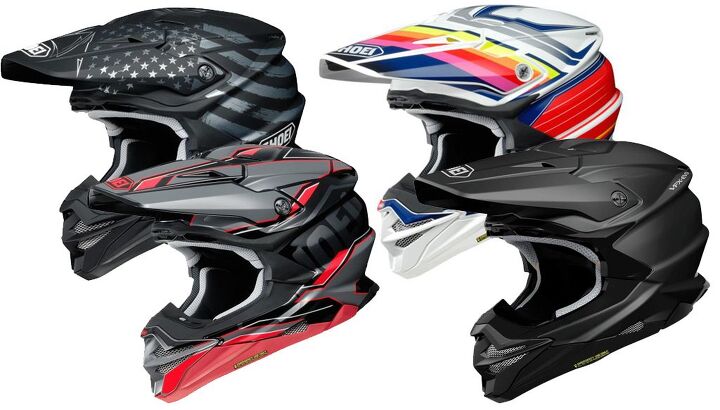
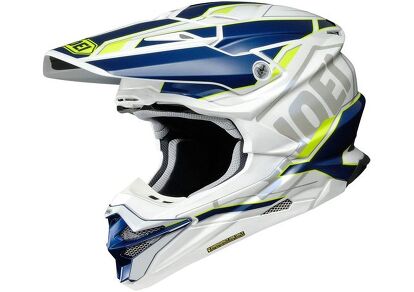












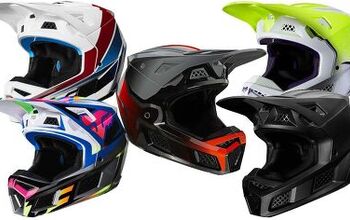
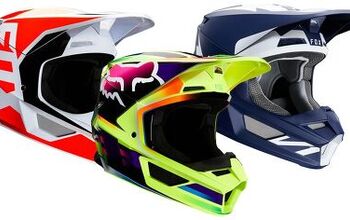
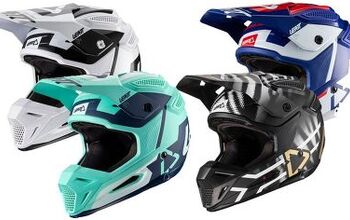



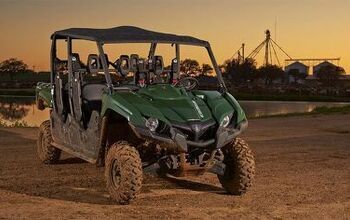
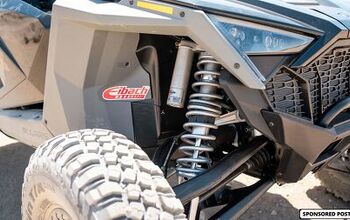
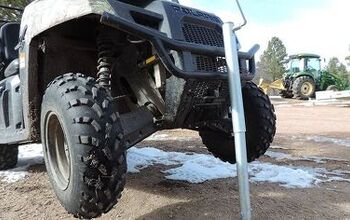
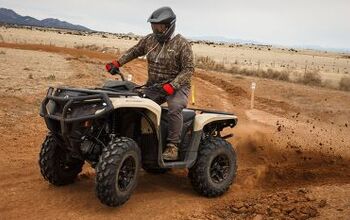
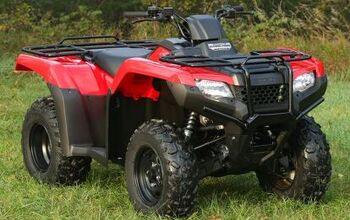
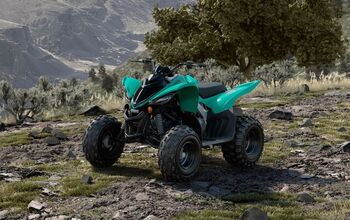
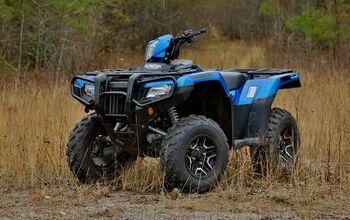
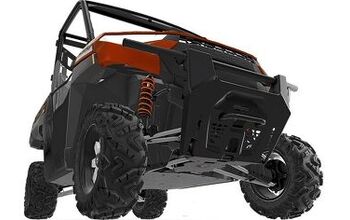
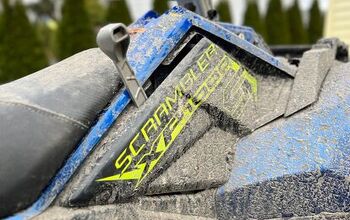
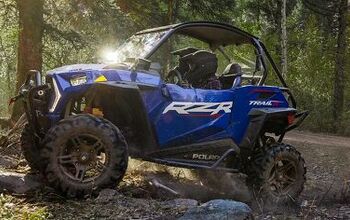
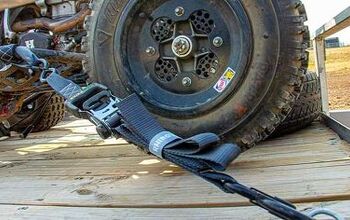

Comments
Join the conversation